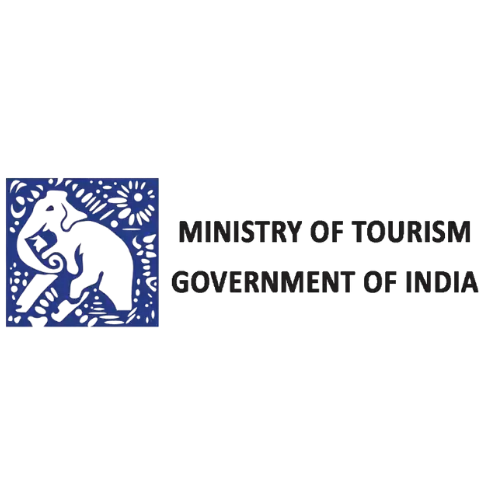Rishikesh to Rishikesh








Valley of Flowers Trek — A Hidden Symphony of the Himalayas
Somewhere deep in the Garhwal Himalayas of Uttarakhand, cradled by snow-capped peaks and nourished by glacial rivers, lies a secluded valley that awakens briefly each year to reveal one of nature’s most spectacular performances — the Valley of Flowers. Hidden for much of the year beneath a heavy coat of snow, it bursts into bloom during the monsoon, blanketing itself in an ocean of wildflowers. For a short spell between July and September, this high-altitude meadow becomes a living tapestry of color, motion, and silence.
More than just a trek, the Valley of Flowers is a meditative walk through nature’s own sanctuary — a journey that weaves through silence, mist, and myth.
A Valley Born of Legends and Discovery
The valley isn’t just a marvel of botany; it’s a place steeped in mythology and serendipity. According to local legends, it was once the garden of the gods. Locals believed the valley was inhabited by fairies and spirits, and so they avoided entering its realm, afraid of disturbing the celestial order.
It remained unknown to the modern world until 1931, when British mountaineer Frank Smythe accidentally stumbled upon it while returning from an expedition to Mount Kamet. Enchanted by the sight, Smythe later wrote:
“The Valley was about six miles long, and two miles wide; a valley of peace and perfect beauty where the human soul might find repose.”
Today, this same valley — now protected as part of the Nanda Devi Biosphere Reserve — is a UNESCO World Heritage Site, internationally recognized for its unique alpine flora and fragile ecological significance.
The Route to Paradise
The trek to the Valley of Flowers begins at Govindghat, a small settlement located on the banks of the Alaknanda River. It’s a 10–11 hour drive from Rishikesh, winding through steep mountain roads, with the Ganga, then the Alaknanda, flowing tirelessly beside you.
From Govindghat, a 4 km drive leads to Pulna, the last motorable village. The real trek begins here. Over the next 9–10 km, the trail gradually ascends to Ghangaria (3,050 m), a quaint village with wooden lodges, teahouses, and a distinct mountain calm. Surrounded by cliffs and forests, this village acts as the base camp for both the Valley of Flowers and the Hemkund Sahib Treks.
The trek from Ghangaria to the valley is approximately 4 km. It starts with a steep climb, eventually easing into a narrow path flanked by mossy rocks, rhododendron trees, and misty pines. As you near the valley, the landscape begins to open — and then, quite suddenly, the flowers appear
Where the Earth Blooms
The moment the valley unveils itself is unforgettable. Stretching across a floor nearly 8 km long and 2 km wide, the Valley of Flowers is a vibrant expanse of Rolling Meadows surrounded by imposing mountain walls. Unlike any botanical garden, this one is wild, unarranged, and free — flowers bloom where they will, creating a raw and natural mosaic of colors.
Depending on the time of the visit, the flowers differ. Early July sees a burst of whites and yellows — anemones, marsh marigolds, and primulas. By late July and August, the valley is ablaze with blues, purples, and reds — blue poppies, geraniums, bellflowers, zinnias, and the rare cobra lily. The Brahma Kamal, Uttarakhand’s state flower, blooms higher up, near Hemkund Sahib, and is revered for both its beauty and spiritual symbolism.
There’s no single highlight. The entire valley is the highlight. Every few meters, the colors shift subtly, the scent changes, and the breeze carries a different rhythm. The soundscape here is unique — no cars, no chatter — just the murmur of the Pushpawati River, the buzz of bees, and the occasional chirp of a Himalayan monal darting through the fog.
Trekking Conditions and Terrain
The trek is classified as easy to moderate. While there are steep sections, especially from Ghangaria to the valley and to Hemkund Sahib, most of the trail is well-defined. The monsoon season, though, adds its own complexity — the path becomes slippery, water crossings rise, and rain gear becomes essential. But it’s also the monsoon that gives life to the valley, turning the landscape lush, vibrant, and alive.
The total distance covered over the trek is around 38–40 km, spread over 5 to 6 days, depending on the chosen itinerary. Trekkers often acclimatize in Ghangaria before venturing higher.
Hemkund Sahib – A Sacred Ascent
For those willing to ascend further, a steep 6 km climb from Ghangaria leads to Hemkund Sahib, one of the world’s highest Sikh shrines, perched beside a glacial lake at an altitude of 14,100 feet. Surrounded by seven snow-capped peaks and mist-veiled ridges, the location is otherworldly.
Even for non-religious trekkers, the spiritual energy of the place is undeniable. Pilgrims chant hymns as they climb, and the calm of the lake mirrors the mountains above. The Brahma Kamal, known to bloom only at high altitudes, is often spotted here in its full glory.
The return journey to Ghangaria is equally humbling, with tired legs but a full heart.
The Monsoon Mood
Unlike typical trekking seasons that favor dry skies and crisp winds, this journey thrives in the wet. The monsoon breathes life into the region, feeding rivers, filling waterfalls, and coaxing the flowers from their dormancy.
Clouds constantly roll in and out, giving the valley a mystical, shape-shifting quality. One moment the valley is bathed in golden light, and the next it’s wrapped in a grey veil of rain. Raincoats are essential, but so is surrender — for here, the rain is not an inconvenience, but the very reason the valley exists.
Biodiversity and Beyond
The Valley of Flowers isn’t just about aesthetics. It’s an important part of the Himalayan ecosystem. Apart from the thousands of plant species, the valley is home to several rare and endangered animals. While sightings are rare, the valley supports creatures such as:
- The snow leopard
- The Asiatic black bear
- The red fox
- The elusive musk deer
- And several species of butterflies and migratory birds
Botanists, conservationists, and researchers frequent this region for its unique alpine biodiversity, and entry to the core valley is regulated to preserve its fragile balance.
What Stays With You
Most treks are about reaching somewhere — a summit, a view, a goal. The Valley of Flowers is different. It’s about being somewhere.
Here, the destination is not just a point on the map. It’s a mood, a memory, a state of awe that washes over you and then lingers. There’s no flag to plant, no victory to claim. You simply walk — among wildflowers, through light rain, under shifting skies — and in the process, something quiet and powerful blooms within you, too.
It’s a reminder that nature doesn’t need to shout to be heard. Sometimes, it just whispers through petals and mist, inviting us to slow down and listen
Here is what trekkers have to say about their experience at Valley of Flowers Trek

Done valley of flowers and Hemkund saheb lake with eco hiking . Manmohan ji and Devender ji are too good . They cares each and every one of the team members . Food , stay are extremely comfortable.

I recently did valley of flowers and Hemkund saheb Gurudwara trek along with my daughter with team Trekoholics . It was an amazing and wonderful experience. Everything was well planned in term of travel,stay , food , and also executed as planned . The best part of Trekoholics is they are ready to customize plan as per your need . Its my fourth trek with them ,everytime they comes out better than before .we had a great group of diversified people ..seasoned trekkers,young kids ,old young trekker ,1st time trekker…but with Devender bhai & Manmohan bhai it was an pleasant & memorable experience for all of us . If someone is planning trek with family I can vouch for this team.Being locals they have indepth knowledge & connections . Devender bhai always have a big smile on his face in any situation & always ready to help you on trek. “Devender Bhai ke banaye pakode yaad rahenge” Valley of flowers was a wonderful trek with lush green sceneries,lots of waterfall & plenty of flowers…..after 5km of continuous ascent when we reached Valley of flowers 💐 3658 m,it was feast for the eyes ,beauty of valley with glacier on the top and Pushpavati river flowing through the valley mesmerized even our soul….in 1992 VOF designated as World Heritage Site…. Next day when we went for Hemkund saheb trek it was an altogether a different spritual trek ,it test your endurance and dedication as trek has continuous steep ascent surrounded by beautiful valley,waterfalls and 🌺, top of that we climbed 1182 stairs as a short cut to reach Gurudwara as the final stretch of 7km trek…it was so spritual,peaceful and divine…listening to Gurbani near the holy lake just took me to another plane… Next day on 15 Aug we joined the flag hoisting ceremony at Ghangaria… On the way back Manmohan bhai on our request took us to Badrinath dham and Mana village …special thanks to Team Trekoholics for that…

Wonderfull experience with Trekoholics!! We have successfully completed Valley of Flower, Hemkund Shahib trek and after that visit Managram, Badrinath. Everything from pick up to drop was very well planned and executed. Our guide whome we called Devendra Bhaiya is a wonderful person. He made every moment very comfortable even in 14500ft. Would highly recommend him as well as Eco-Hiking and Manmohan Bhai for anyone who wants to have a good experience. If you are first time in trek, they will guide you throughout.
.png)
Very good experience!! Devender Bhai and Manmohan Bhai supported through out. Good food and stay arrangements and guide helped us through out the travel. Did valley of flowers and Hemkund with them.
Available dates
Click on available dates to Register
- What the colours mean
- Available:Registration is on.
- Full:Indicates the group is full. No further slots are likely. A full group has 18 members.
Dates not suiting you? Click here to customize your trip.






